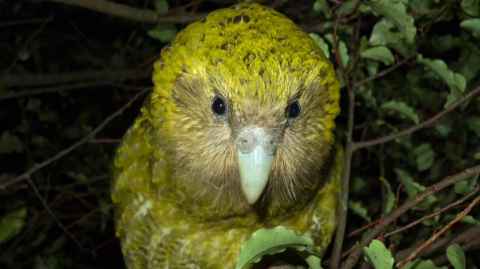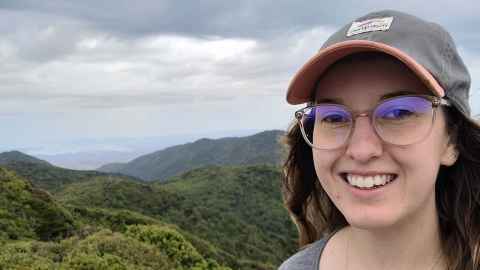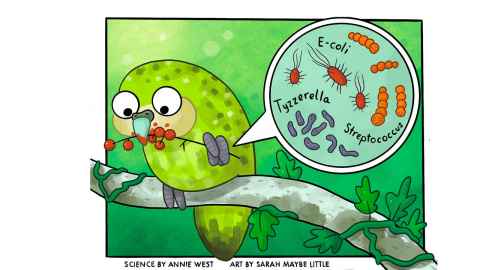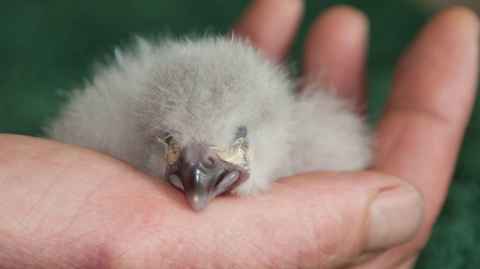Kākāpō microbiome adds to parrot's extraordinary quirks
03 October 2022
Clues from the microbiome may help a critically endangered bird to survive.

One of the world’s must unusual parrots, Aotearoa New Zealand’s kākāpō, is just as special on the inside, according to research by a scientist at Waipapa Taumata Rau, University of Auckland.
The parrot’s gut microbiome – the collection of bacteria and other microorganisms that can affect health and growth – seems to be unlike any other bird’s, according to Dr Annie West, of the School of Biological Sciences.
She analysed faecal samples from 67 chicks in 35 nests during her PhD for a study published in the journal Animal Microbiome.
With only 252 of the parrots left alive, researchers welcome any and every clue that may assist in helping the remarkable birds to survive and thrive.

As with humans, the microbiome is an increasing focus of research into animal health, taking on an extra importance for critically endangered species such as the kākāpō.
Humans and animals are “hosts” to a diverse array of bacteria and other microorganisms.
Analysis of the microbiome samples, which were collected in 2019, confirmed the kākāpō’s gut microbial community is less diverse than usual for a herbivore, with Escherichia coli bacteria the dominant species.
In an extra twist, levels of Escherichia coli vary substantially between individual kākāpō.
Searching for animal microbiomes with similar E. coli dominance and individual variation, the closest fit uncovered so far is a mammal, China’s giant panda.
“The kākāpō gut microbiome is yet another example of just how unique and quirky these beautiful birds are,” says West.

One focus of West’s study was checking on the Department of Conversation’s practice of removing chick faecal material from kākāpō nests.
Could hygiene be coming at the expense of an optimal microbiome? West found the removals didn’t make much difference to the microbiome, but DOC has since mostly dropped the practice as part of limiting human interventions as much as possible.
The research did show, however, that supplements fed to hand-reared chicks could substantially alter their microbiomes, although the effect seemed to be transitory. That’s led to a renewed focus on supplements’ ingredients and potential effects.
Heavier than any other parrot, with a weight of as much as 4 kilograms, all kākāpō live wild on five offshore islands where they are intensively managed by the Department of Conservation.
While it’s the world’s only flightless parrot, the kākāpō uses its strong claws and bill to climb high into trees to feed. Another unique trait: it's the only “lek breeding” parrot, meaning males mount competitive displays to be chosen by females each breeding season. Kākāpō are also suspected to be among the world’s longest-living birds.

Few animals in Aotearoa are so heavily monitored, with each bird wearing a backpack transmitter for tracking and activity monitoring.
The kākāpō and its closest relatives, the kea and kākā, are members of a parrot family that branched off in Gondwana early in the evolution of the world’s parrots and have been around for as long as 29 million years.
The birds live on islands including Whenua Hou (Codfish Island) and Pukenui (Anchor Island) at the bottom of the South Island and Te Hauturu-o-Toi (Little Barrier Island) near Auckland.
Dr West’s study built on previous research by Professor Mike Taylor, Dr Elena Perry and Dr David Waite.
Learn more about the use of animals in research and teaching at the University of Auckland.
Media contact
Paul Panckhurst | media adviser
M: 022 032 8475
E: paul.panckhurst@auckland.ac.nz